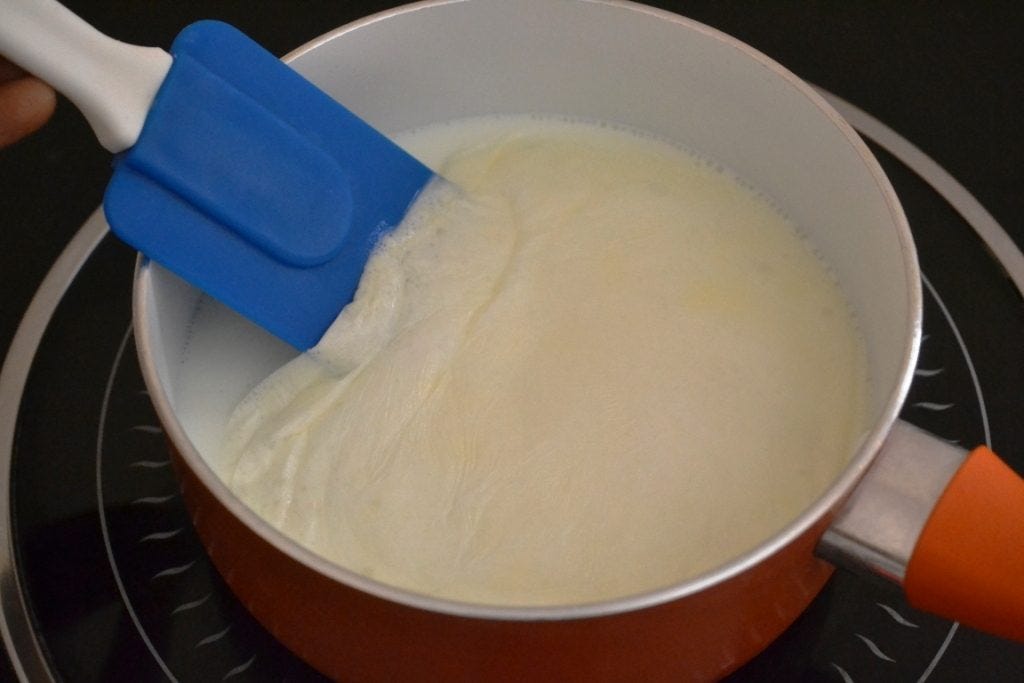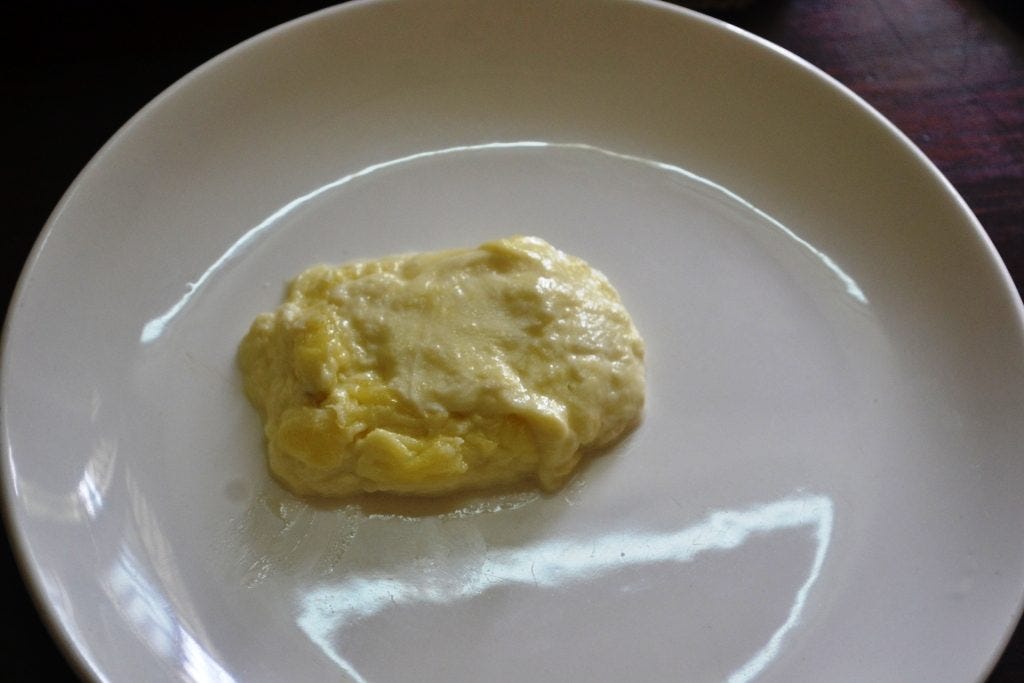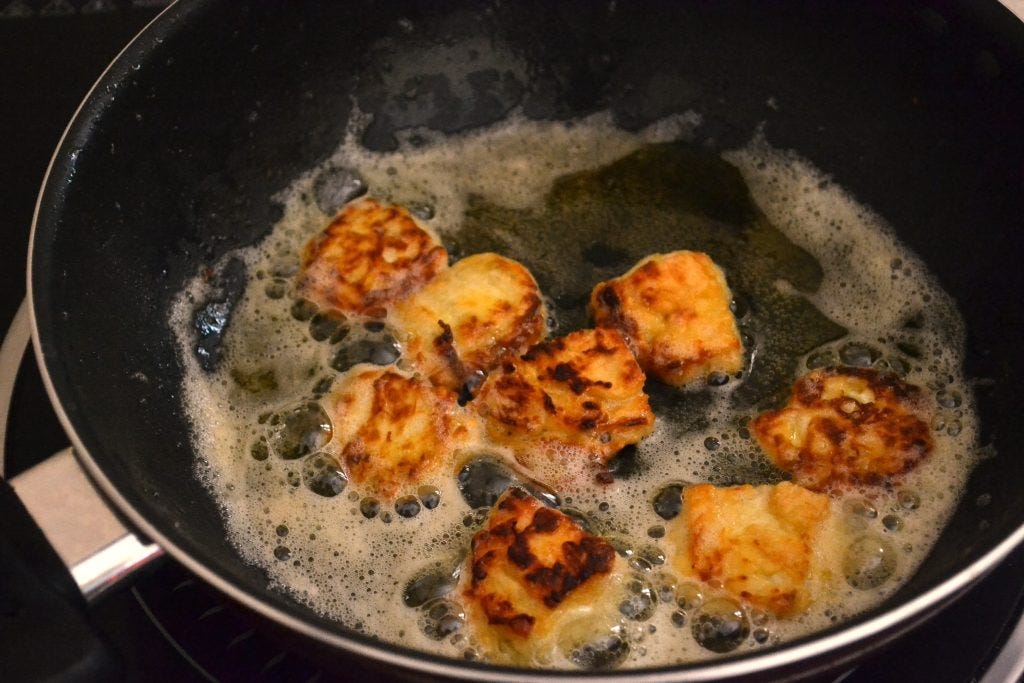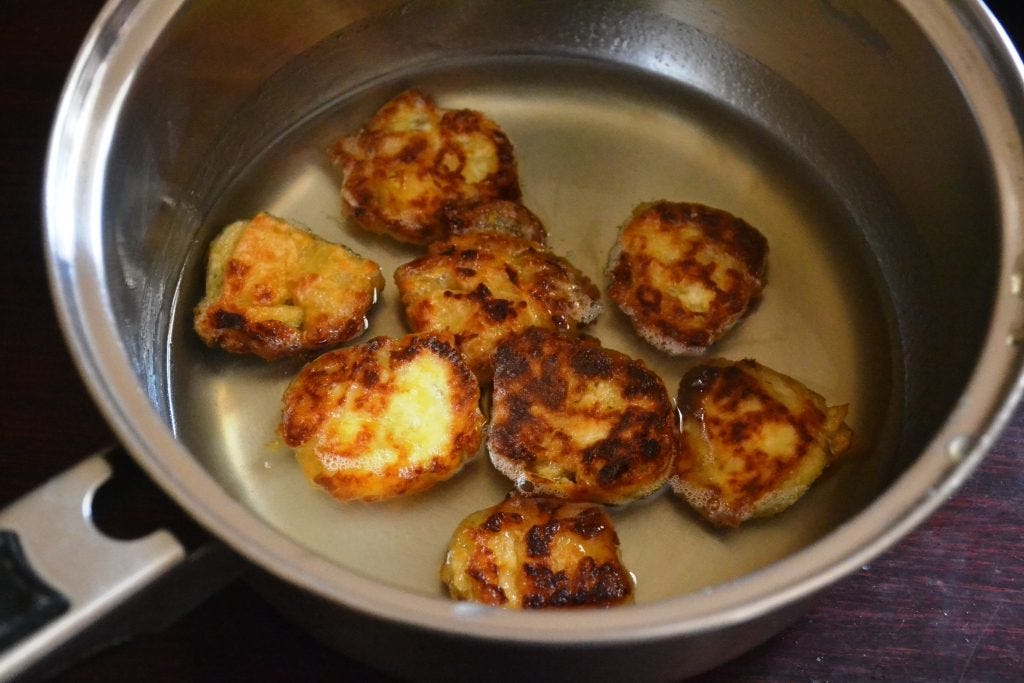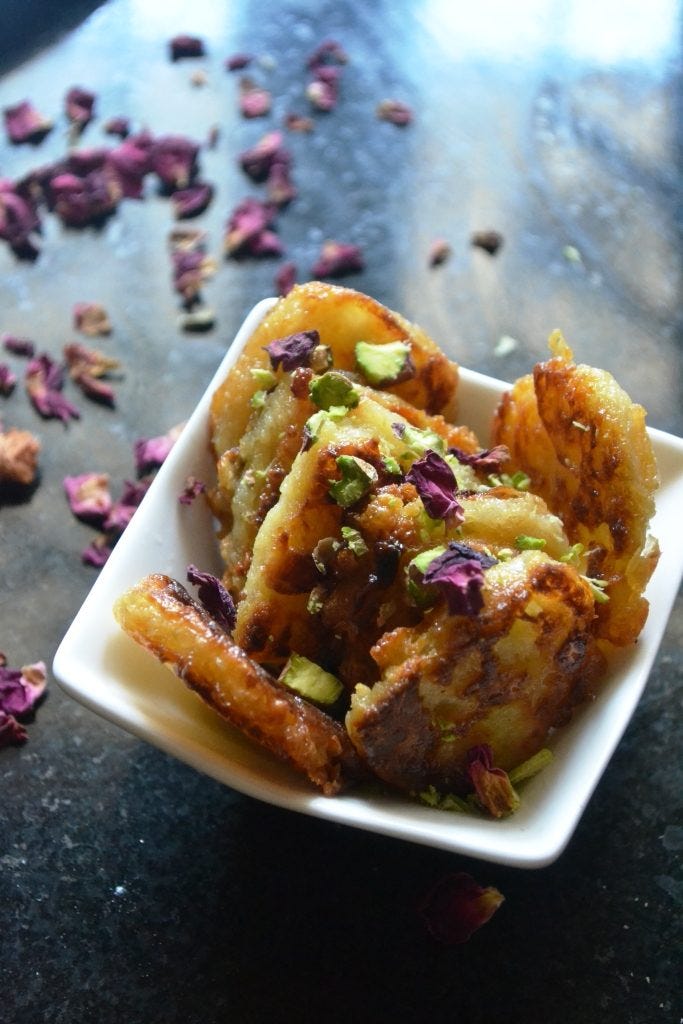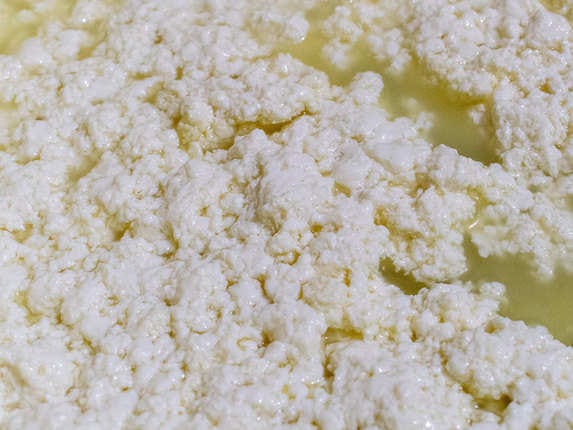On Indian sweets
These past weeks I’ve been testing quite a few Indian sweet recipes for our upcoming Seasonings Magazine issue, and it is really wonderful getting to explore this big vast world that I never really thought much about!
I’ve made chhena poda, jalebis with mango rabri, and carrot halwa so far, and what strikes me about all of them is how milk-forward they are. Chhena poda is milk that has been curdled to cheese, and baked with spices and sugar. Mango rabri is made with just mango, milk, and sugar. Carrot halwa is made by reducing carrots in milk until it caramelizes. There isn’t a whole list of ingredients, so you really taste the quality of the milk in every bite.
The fact that so many Indian sweets are milk-based is unsurprising. The deity Krishna was said to have grown up amongst a band of cowherds, where he was surrounded by cows, milk, and its by-products. An oft-told tale speaks of Krishna stealing the butter from his mother’s yogurt-churning pot, earning him the affectionate nickname ‘makhan chor’ (butter thief).
Because of his love for dairy, devotees often make offerings of milky sweets. Milk is also used to bathe Hindu idols on special occasions, and ghee is used in lamps for rituals. These sweets accompany much of Hindu life, and are included in rituals from an infant’s first food to the last rituals after death. Because of this, sweets are not just sweets in Indian food culture. They are rich in religious symbolism and cultural significance.
In the past few weeks of researching and trying to wrap my head around the techniques of Indian sweet-making, I have been amazed at how creative and resourceful Indians are in making the most of such a humble, everyday ingredient.
Generally speaking, there are three milk products that are used to make Indian sweets:
1. The milk ‘skin’ (sar)
In a tropical region, before the advent of refrigeration and pasteurization, a key way to preserve milk was to repeatedly boil it. A by-product of all of this boiling was the transformation of the fatty top-layer into a ‘skin’ (called ‘sar’) as the milk cools. When skimmed, stacked, and pressed together, these layers of cream can be used to make sweets. Here’s a sweet called sarbhaja, made by collecting the cream layer, shaping it into a square block, and slicing it into small squares. Each is fried until golden in ghee, before being soaked in a syrup.
2. Reduced milk (khoa)
This is the commonest material for Indian sweets, made by reducing milk until it forms a paste. Some modern recipes suggest substituting milk powder or condensed milk, but you lose the complexity of caramelized milk. Gulab jamun, a syrup-soaked fritter, is one sweet made from khoa. Traditionally, khoa is mixed with flour and milk, formed into balls and deep-fried, before being soaked in syrup. The resulting gulab jamun is reminiscent of a rum baba, with a bittersweet edge from the twice-caramelized milk sugars.
3. Fresh cheese (chhena)
Milk can also be transformed through coagulation to form cheese (chhena). Similar to making paneer, hot milk is split with curd or buttermilk. The use of fermented dairy to split milk lends more complex flavour than if one were to use vinegar or lemon juice. The strained curds are then be used in a myriad of desserts such as jalebi and rasgulla.
This week on Singapore Noodles:
Mulligatawny soup. An invention by British settlers in Tamil Nadu, this soup is a corruption of the Tamil words ‘milagu-tannir’ meaning ‘pepper water’. The dish was then transported to colonial Singapore, where Eurasians enjoy it for supper after midnight mass on Christmas eve with rice or French loaf.
It takes a significant amount of effort, time, and money to create quality content on Singapore Noodles. Signing up to be a member only costs S$8 per month (even less if you sign up for a year) and, with that, you’ll be supporting the documentation of Singaporean food culture, and will get access to all recipes, video tutorials, and monthly cookalongs! Click here to get access to future content, plus all of the archive. To those of you who have already subscribed, thank you for keeping Singapore Noodles going (join our Facebook group to sign up for the chicken rendang cookalong happening this Sunday)! 🥰✨





